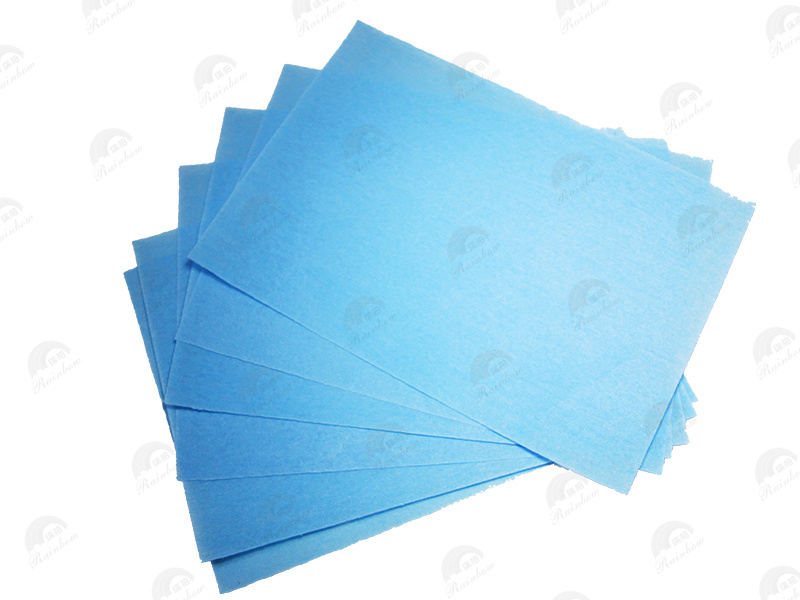Understanding Sterilization Wrap Nonwoven Fabric: Key Insights for Professionals
Release time:
2025-06-08
Sterilization Wrap Nonwoven Fabric is an essential material in the medical and healthcare sectors, particularly in surgical and procedural settings. Its primary function is to provide a sterile barrier that protects instruments and supplies during sterilization processes. Unlike traditional woven fabrics, nonwoven options offer unique advantages that enhance their performance and usability.
One of the key benefits of Sterilization Wrap Nonwoven Fabric lies in its composition. Typically made from polypropylene or other synthetic fibers, these nonwoven materials are designed to be lightweight, yet durable. This combination allows for effective breathability while maintaining a robust structure, which is crucial during the sterilization process. The fabric's porous nature enables the penetration of sterilizing agents, such as steam or ethylene oxide, ensuring that the items wrapped within achieve an optimum level of sterility.
Moreover, Sterilization Wrap Nonwoven Fabric is engineered to be lint-free, minimizing the risk of contamination during surgical procedures. This property is vital for maintaining a sterile field and preventing postoperative infections, a critical concern in healthcare environments. Additionally, the absence of lint and fibers enhances visibility and cleanliness, providing healthcare professionals with the confidence they need when handling surgical instruments.
Another significant advantage of using nonwoven fabric for sterilization wrap is its user-friendly characteristics. The material is generally easy to handle and can be cut into various sizes to accommodate different instruments and supplies. This adaptability enhances efficiency in preparing for surgeries or procedures. Furthermore, many nonwoven wraps come with indicators that change color after exposure to sterilization conditions, providing a visual assurance that the items are indeed sterile.
In terms of environmental considerations, many manufacturers are increasingly focusing on producing Sterilization Wrap Nonwoven Fabric that is recyclable or made from sustainable sources. This trend reflects the growing commitment to reducing plastic waste in the medical industry while still providing high-quality performance.
For professionals in the textile industry, understanding the nuances of Sterilization Wrap Nonwoven Fabric is crucial. Whether you are involved in manufacturing, distribution, or procurement, knowledge of this material's properties and applications can help you make informed decisions that align with industry standards and customer needs.
In conclusion, Sterilization Wrap Nonwoven Fabric plays a vital role in ensuring the safety and effectiveness of medical procedures. Its unique properties make it an essential choice for healthcare professionals seeking reliable and efficient sterilization solutions. As the industry continues to evolve, staying informed about advancements in nonwoven technology will be key to maintaining high standards in healthcare practices.
One of the key benefits of Sterilization Wrap Nonwoven Fabric lies in its composition. Typically made from polypropylene or other synthetic fibers, these nonwoven materials are designed to be lightweight, yet durable. This combination allows for effective breathability while maintaining a robust structure, which is crucial during the sterilization process. The fabric's porous nature enables the penetration of sterilizing agents, such as steam or ethylene oxide, ensuring that the items wrapped within achieve an optimum level of sterility.
Moreover, Sterilization Wrap Nonwoven Fabric is engineered to be lint-free, minimizing the risk of contamination during surgical procedures. This property is vital for maintaining a sterile field and preventing postoperative infections, a critical concern in healthcare environments. Additionally, the absence of lint and fibers enhances visibility and cleanliness, providing healthcare professionals with the confidence they need when handling surgical instruments.
Another significant advantage of using nonwoven fabric for sterilization wrap is its user-friendly characteristics. The material is generally easy to handle and can be cut into various sizes to accommodate different instruments and supplies. This adaptability enhances efficiency in preparing for surgeries or procedures. Furthermore, many nonwoven wraps come with indicators that change color after exposure to sterilization conditions, providing a visual assurance that the items are indeed sterile.
In terms of environmental considerations, many manufacturers are increasingly focusing on producing Sterilization Wrap Nonwoven Fabric that is recyclable or made from sustainable sources. This trend reflects the growing commitment to reducing plastic waste in the medical industry while still providing high-quality performance.
For professionals in the textile industry, understanding the nuances of Sterilization Wrap Nonwoven Fabric is crucial. Whether you are involved in manufacturing, distribution, or procurement, knowledge of this material's properties and applications can help you make informed decisions that align with industry standards and customer needs.
In conclusion, Sterilization Wrap Nonwoven Fabric plays a vital role in ensuring the safety and effectiveness of medical procedures. Its unique properties make it an essential choice for healthcare professionals seeking reliable and efficient sterilization solutions. As the industry continues to evolve, staying informed about advancements in nonwoven technology will be key to maintaining high standards in healthcare practices.
Sterilization Wrap Nonwoven Fabric
Previous Page
Previous Page
Latest News
Nantong Rainbow Technology Co., Ltd.
Telephone:+86-13587673537
E-mail:chrislc717@163.com
Address: Group 42, Xizansi Village, Xiting Town, Tongzhou District, Nantong City, Jiangsu Province

Copyright©2024 Nantong Rainbow Technology Co., Ltd. | Powered by www.300.cn
Copyright©2024 Nantong Rainbow Technology Co., Ltd.
Powered by www.300.cn




